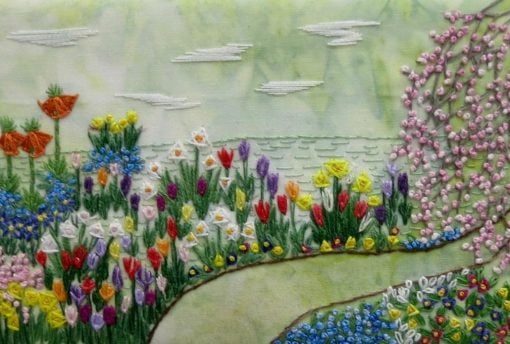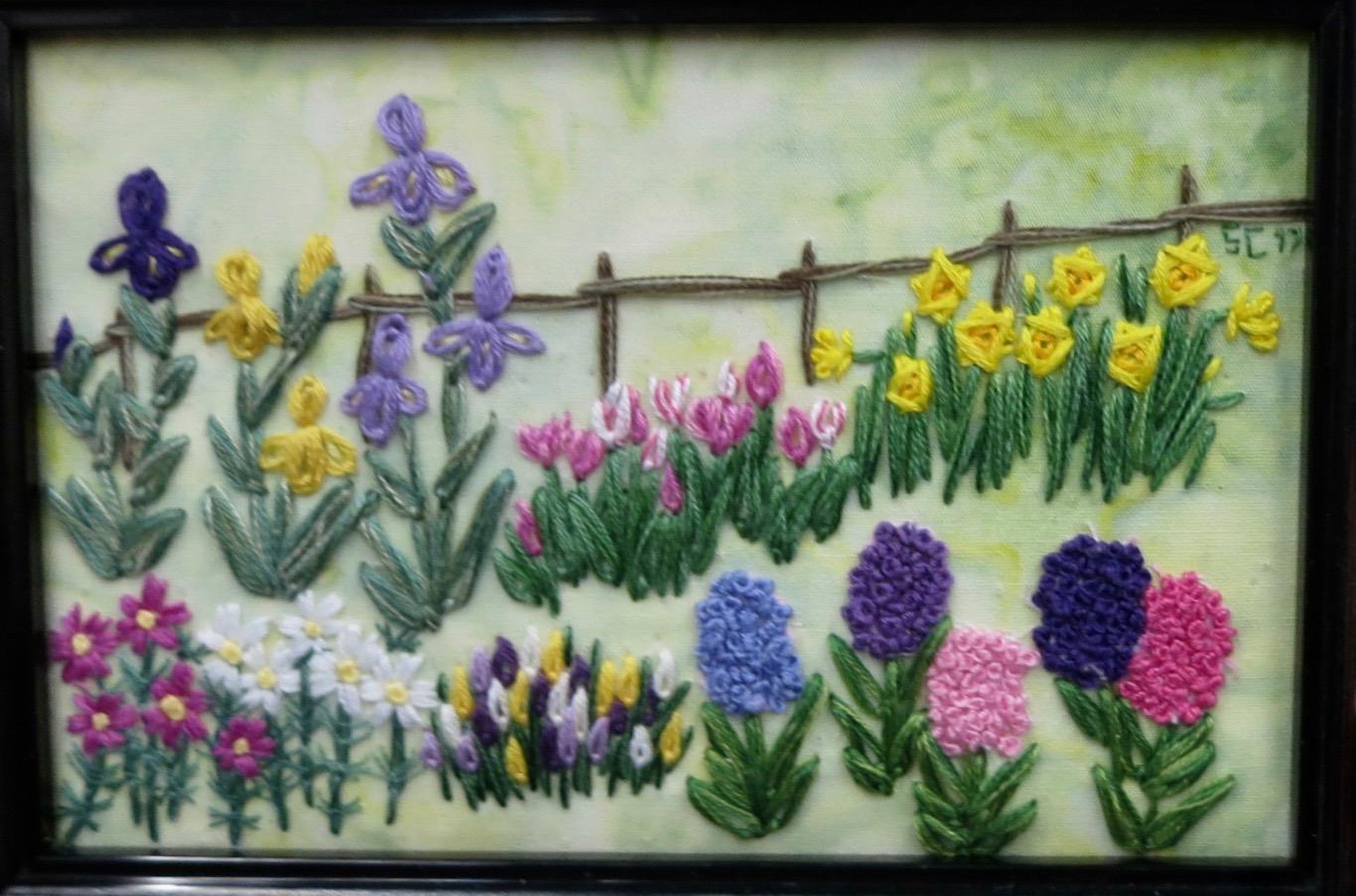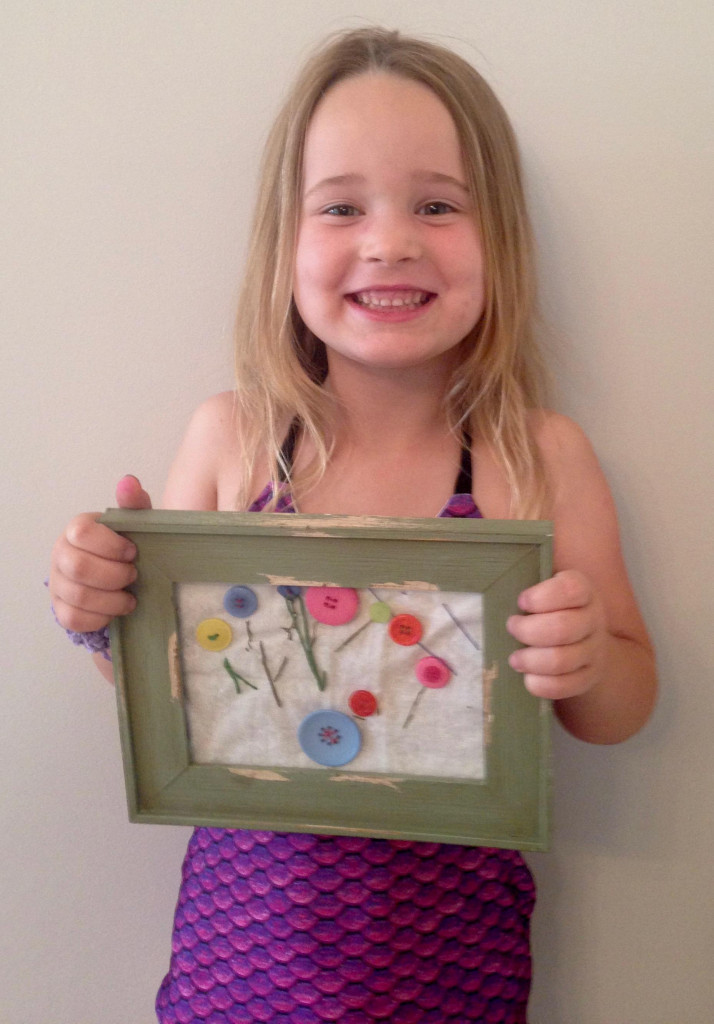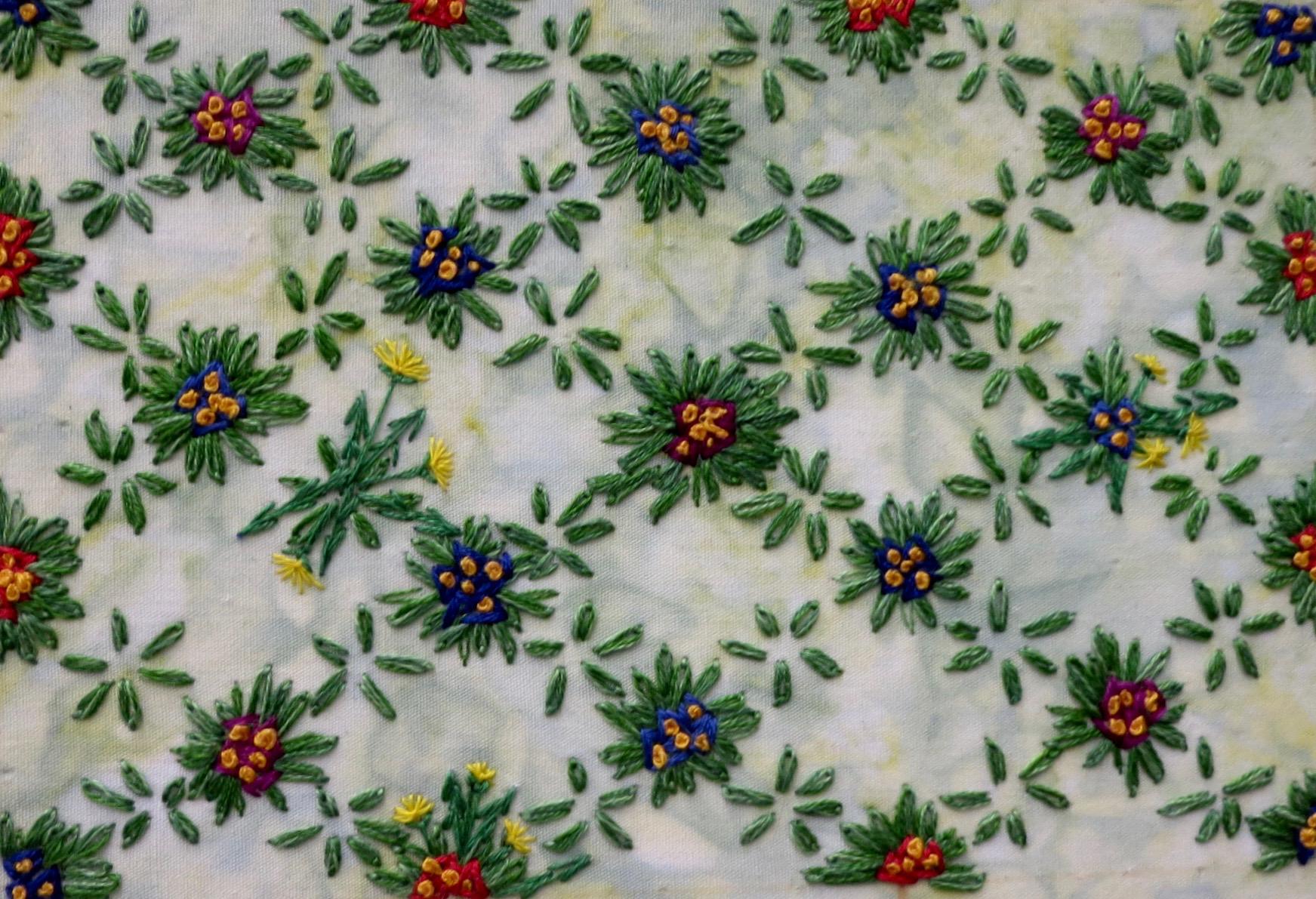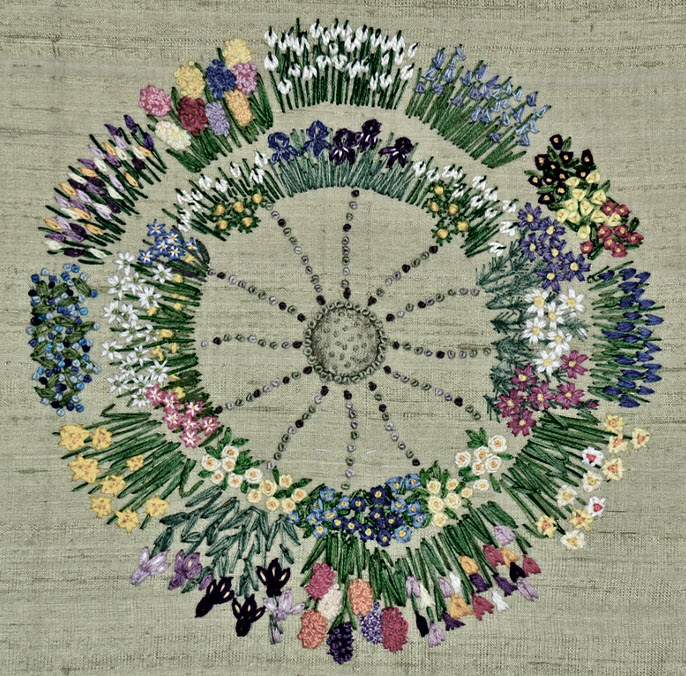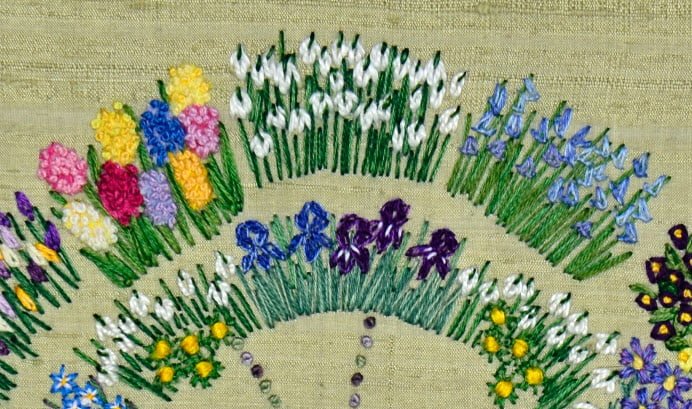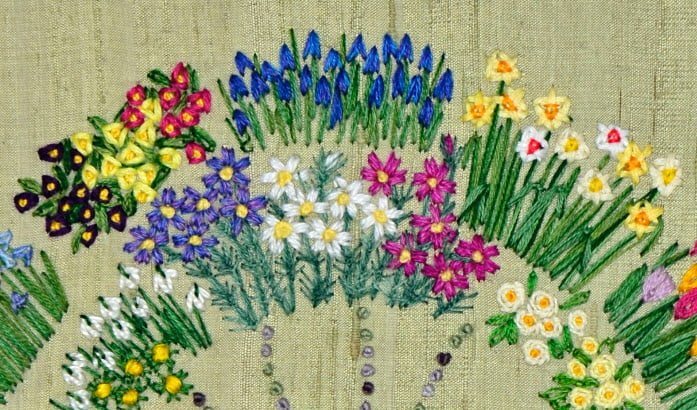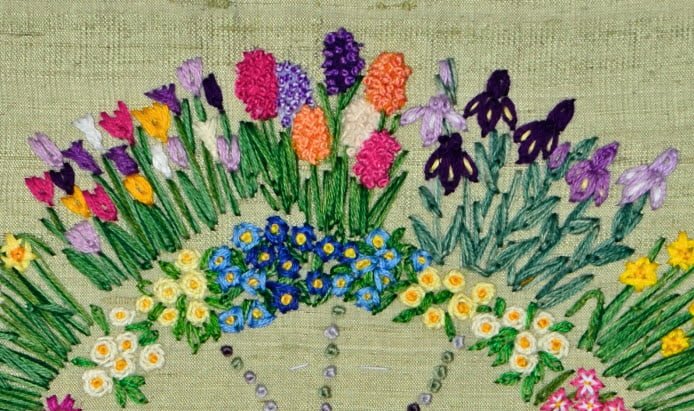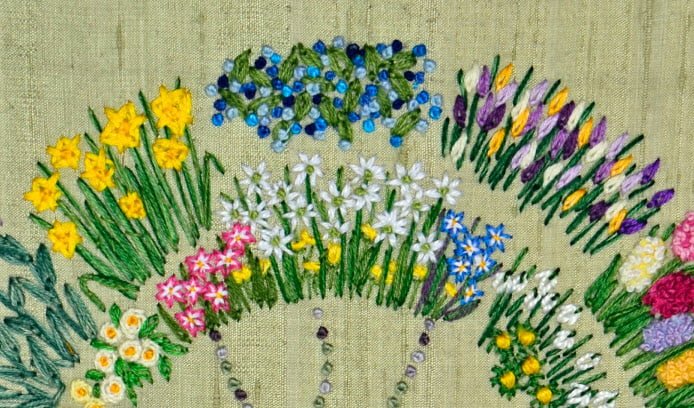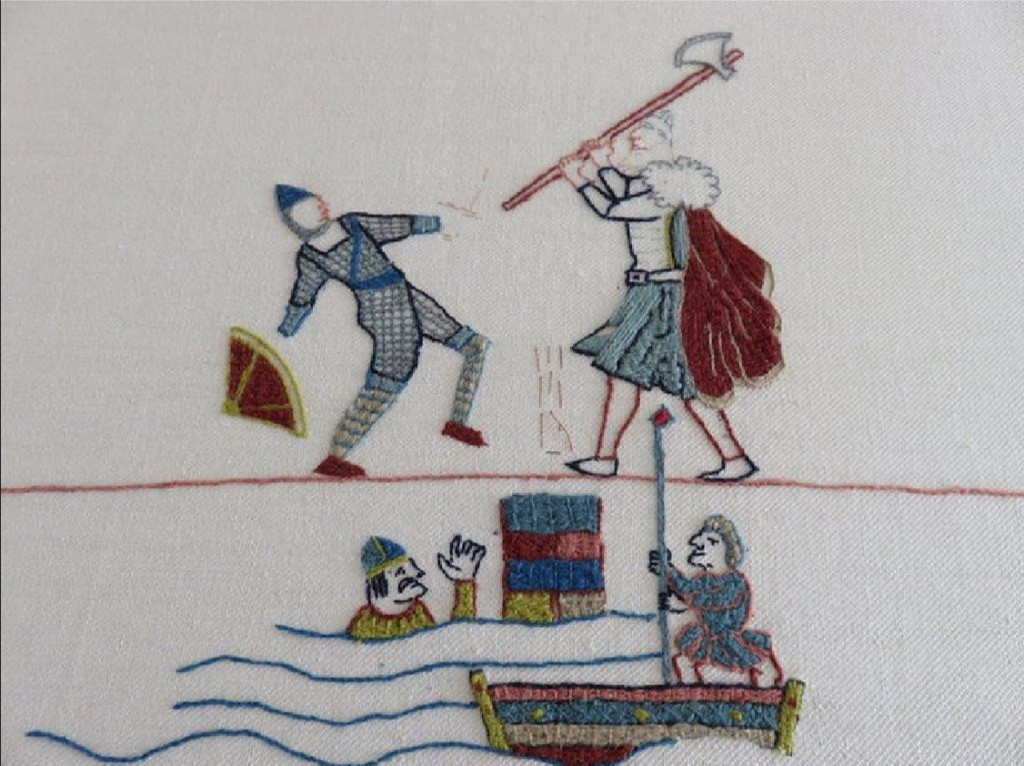This stitcher is a long time quilter and had never hand stitched anything other than a kit previous to this garden. She loved stitching the tree and the tulips and added the rocks to ground some of the plants. She loved the dandelions so included those.
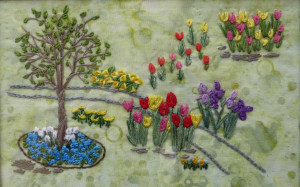
A garden with promise: stitched by Josie Abel
Edna is new to stitching so she is also new to creative stitching. This is a most successful path with a lot to look at on both sides. Her primulas and forsythias are very successful. Her next, current, project is also creative being designed by herself. It appears that Edna has bypassed kits and printed designs completely and has become an ‘original concept’ embroiderer.
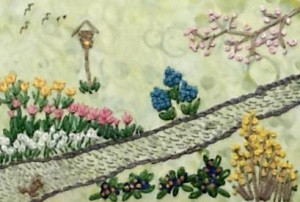
Action! Action! Birds in the sky: stitched by Edna Miller
Pat started with the fence and distant trees. The flowers were added from the top down to the front. One has to look at this garden carefully as there is a lot to see. As you look and identify the flowers you will see small extra ones tucked into unexpected places. Pat is now an experienced stitcher. Other pieces of her work are included in Hand Stitch Recognizable Summer Flowers.
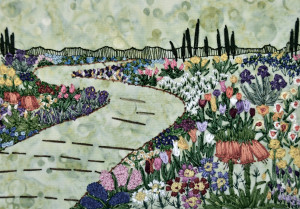
My Garden of Eden: stitched by Pat Harwood
Joan is a most creative lady as can be seen by her interpretation of a garden. It is completely different in every possible way. It features wisteria, magnolia, wild grasses snowdrops and grape hyacinths. This piece is a tribute to the physical challenges Joan battles with dedication and determination every day of the year.
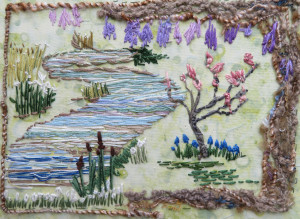
The River of Life: stitched by Joan Prowse
